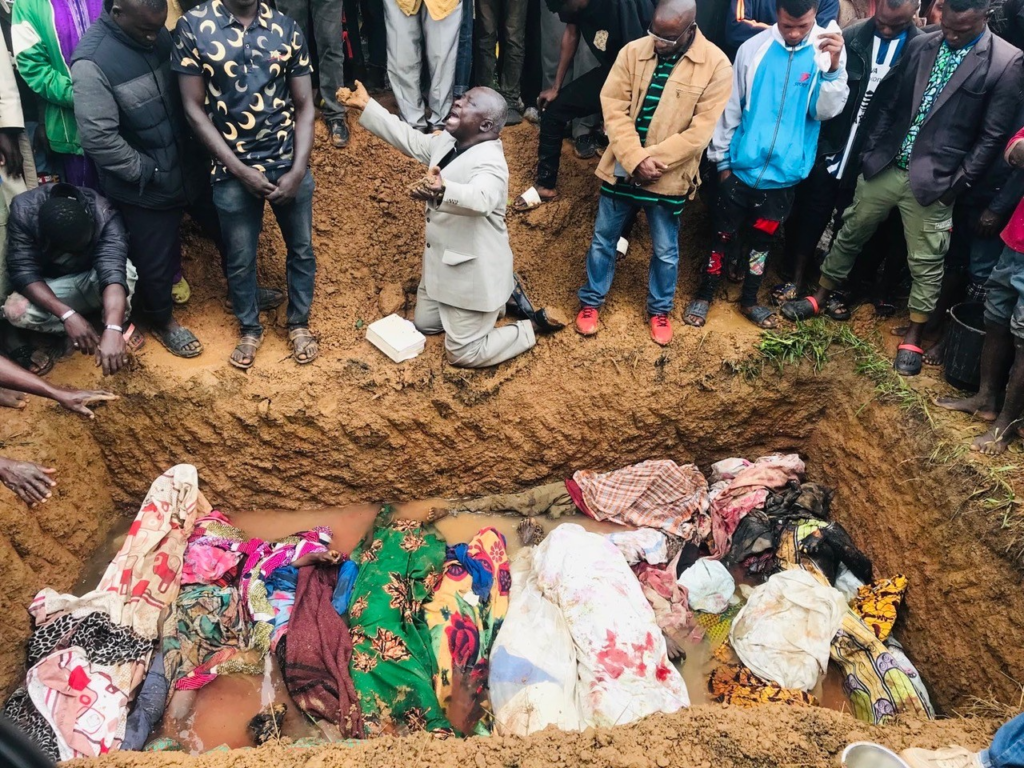Murder Rate Down but Kidnapping for Ransom Increased by Same Margin
By Steven Kefas
(Abuja) As President Bola Tinubu marked his second year in office on May 29, many want to know if he delivered on his campaign promise to make quelling insecurity a top priority.
Some security analysts told media that in the last two years, Tinubu’s security team has shown progress.
“In the last two years, more than 8000 criminals–bandits, armed robbers, Boko Haram terrorists, and kidnappers–have been eliminated, and more than 10,000 Nigerians, primarily women and children, have been rescued from their abductors,” the presidency recently said, according to The Daily Nigerian.
Yet, a comprehensive analysis of Nigeria’s security landscape reveals a troubling reality: despite claims of improved security, terror groups are gaining ground, adopting new tactics, and threatening the nation’s food security with strategic attacks on farming communities in the Middle Belt.
Security Stagnation Under New Leadership
When President Tinubu assumed office in May 2023, he inherited a nation plagued by various security challenges. His administration pledged to tackle these issues with renewed vigor and strategic approaches. However, data from the Observatory for Religious Freedom in Africa (ORFA) paints a different picture.
Table 1. Comparison of the trends of civilians killed and abducted in the geopolitical zones

Although the number of killings went down, the number of kidnappings went up with nearly the same number of victims. Taken together: -2%.
Table 2. Comparison of the trends of incidents with civilians killed and abducted in the geopolitical zones

The same holds true for the incidents with killings or kidnappings. The number of incidents with killings went down, while the number of incidents with kidnappings went up. Taken together: +5%.
Changing Tactics
The security situation in Kaduna and some states in the Northwest tell a story of adaptation rather than elimination. Local government areas such as Kajuru, Chikun, Kauru, and Kaura have experienced a shift from mass casualty attacks to targeted kidnappings.
This tactical shift suggests that while dispersed FEM bandits from the Northwest have successfully infiltrated Kaduna state, they currently lack the coordination and capacity for large-scale attacks. Instead, they have pivoted to kidnapping for ransom operations, which require fewer resources while still generating funding and spreading terror.
The raw numbers tell a stark story. Despite changes in leadership and security strategies, the situation on the ground remains largely unchanged—or in some regions, has deteriorated significantly.
Plateau State: Strategic Targeting of Farming Communities
Plateau State, once known as Nigeria’s “Home of Peace and Tourism,” has become an epicenter of violence with particularly troubling patterns emerging in 2025. This is a continuation of the trend that was visible in 2024 compared to the previous four years.
Table 3. Trend of civilians killed in Plateau State

The data show slightly more attacks (+4) with seriously more victims (+119).
Recent attacks in Plateau State reveal a calculated strategy to disrupt the farming season. The timing of these attacks—coinciding with planting periods—suggests a deliberate attempt to prevent farmers from accessing their lands, threatening food production in a region crucial to Nigeria’s agricultural output.
The Berom Youth Moulders Association’s recent press statement raises alarming concerns about threats of future attacks. These warnings indicate a coordinated campaign to permanently displace farming communities, creating a long-term food security crisis that could affect the entire nation.
Emerging Terror Groups Threaten Nigeria’s Food Basket
The North Central region and by extension the entire northern part of the country, responsible for a significant portion of Nigeria’s food production, faces an unprecedented convergence of threats from existing and newly emerging terror groups:
- The emergence of Lakurawa in Sokoto and Kebbi states
- Mahmuda group establishing presence in Kwara and parts of Niger state
- Ansaru terror cells setting up operations in Kogi state
- Acceleration of Fulani Ethnic Militia (FEM) attacks in Plateau and Benue states
These developments represent not just isolated security incidents but a strategic encirclement of Nigeria’s food-producing heartland. The concentration of these groups in areas responsible for staple crop production suggest a deliberate attempt to control food resources and destabilize the nation’s economy.
During ORFA’s most recent 5-year reporting period, the Northcentral zone has experienced the most attacks with civilian killings during the farming season—much more so than in other geopolitical zones. This trend reinforces the strategic nature of these attacks, designed to maximize disruption to Nigeria’s food production capabilities.
Fig. 1. Civilians killed per month in the geopolitical zones for the overall 5-year reporting period (Oct 2019 – Sep 2024)

Northeast: Boko Haram and ISWAP Show Renewed Capability
While the government has repeatedly claimed significant victories against Boko Haram and Islamic State West Africa Province (ISWAP), recent events tell a different story. These groups have demonstrated improved tactical capabilities, successfully launching complex attacks on military facilities in the Northeast.
These attacks on hardened military targets indicate that terror groups are not retreating but adapting and potentially growing stronger than they were two years ago. Their ability to challenge the Nigerian military directly represents a significant shift in the security landscape.
Kidnapping Crisis: Terrorists and Kidnappers Relocated
While the military has made notable progress in killing or capturing bandit leaders in the states of Zamfara, Katsina, and Sokoto, a worrying pattern has emerged. Rather than eliminating the threat, these criminal units appear to have squeezed criminals from high military presence zones to more permissive areas in neighboring regions.
Table 4. Trend of civilians abducted in four northwestern states

Kidnappings in Kaduna State had a 37 percent increase compared to the foregoing 4-year average. For Katsina State it was 97 percent, Sokoto State 108 percent and Zamfara State 156 percent.
Kaduna and other Northwest states have experienced a dramatic surge in kidnappings, suggesting that foot soldiers from disbanded bandit groups have relocated to more vulnerable areas. This pattern reveals a critical gap in security operations—the failure to close escape routes and to safeguard vulnerable neighboring regions during major offensives.
Military Efforts and Challenges
The Nigerian military continues to make sacrifices including paying the ultimate price as seen recently in the ongoing fight against insurgency. Their operations have successfully neutralized several high-profile bandit leaders and disrupted terror networks. These efforts, particularly in the Northwest, have yielded important tactical victories.
However, the persistence and adaptation of terror groups highlight the need for a more comprehensive approach. Military operations must be more intentional, ensuring that when pressure is applied in one area, adjacent regions are secured to prevent the displacement of threats rather than their elimination.
Conclusion: A Nation at a Crossroads
It may be argued that comprehensive data analysis reveals a Nigeria standing at a critical juncture. The apparent strategic encirclement of food-producing regions by multiple terror groups, combined with the seasonal timing of attacks to maximize disruption of annual planting and harvests suggests to some a strategic targeting of Nigeria’s agricultural sector.
According to analysts consulted by TruthNigeria, the window for effective intervention is rapidly closing. Without immediate, coordinated action that addresses both the security symptoms and underlying drivers of conflict, Nigeria faces the prospect of becoming unable to feed its own population while simultaneously battling multiple insurgencies across its territory.
Steven Kefas is a conflict reporter for TruthNigeria and an analyst for the Observatory for Religious Freedom in Africa (ORFA).



